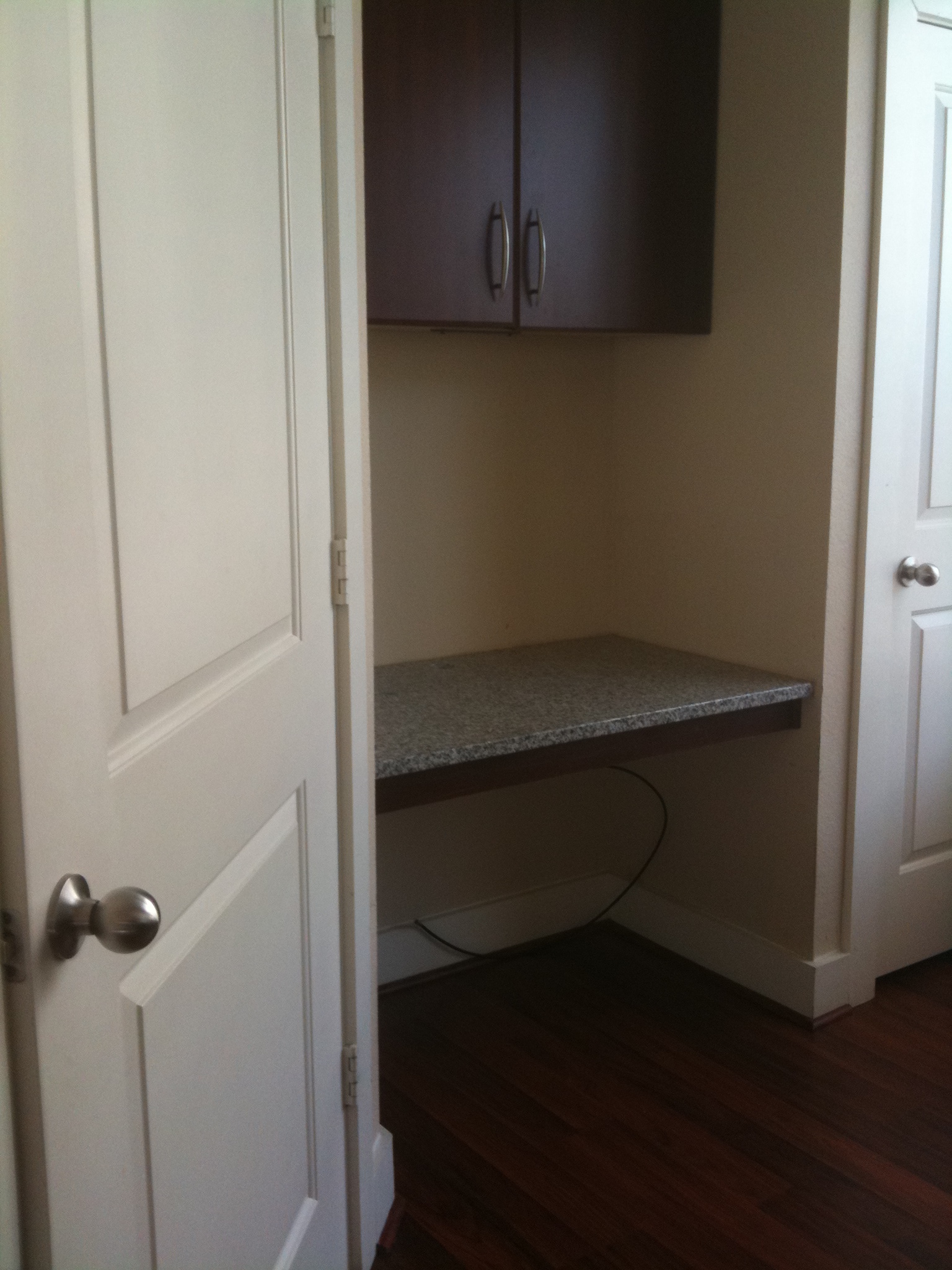One of the most frequently asked questions on Apartment Prepper [1] is how can someone living in a small space prepare for an emergency. I’ll be the first one to admit that it can be challenging, but it’s definitely doable.
1. Free up some space
 [2]Although it is tempting to just go out and buy supplies and gear, and a lot more exciting, the first step that I recommend is to designate a space for your supplies. Find a closet or drawer or even a corner of the house that you will use for your emergency supplies. Depending on how organized you are when you start out, you may have to declutter and get rid of stuff in order to accomplish this.
[2]Although it is tempting to just go out and buy supplies and gear, and a lot more exciting, the first step that I recommend is to designate a space for your supplies. Find a closet or drawer or even a corner of the house that you will use for your emergency supplies. Depending on how organized you are when you start out, you may have to declutter and get rid of stuff in order to accomplish this.
Take a Saturday going through your belongings and weeding out stuff you no longer use.
The purpose of this step is two-fold:
- You clean up an area and find an empty space for your prepping supplies.
- You may find items you can sell at a garage sale, Ebay or Craigslist that can net you some extra funds to fund your emergency budget. Or, you can donate items to charity and get a tax deduction.
Decluttering is a win-win for everyone, plus you will feel better in the process. Do not skip this step!
2. Track your usage
The next step that I recommend is to take about three days to track everything you use. From the time you wake up until bed time, keep a little notepad with you and make a note of every time you and your family uses. The purpose of this step is to make you aware of all the items you and your family uses, including drinks and food, so you will only stock up on stuff you actually use. You will want to have items that you will use, even if no emergency happens.
Too often, when someone feels the need to prepare, they run out and buy all the stuff that seems like a good idea because the items are cheap or sounds like a prepping must-have, but turns out that no one will use it. For example, when I first started to prepare, I thought that food bars were something you need to have, because some sites recommended it. As it turned out, some of these were so vile tasting, that no one ate it and the items expired.
Preparing for an emergency is not a one-time effort, but is a constant activity which I will describe in the next section.
3. Rotate your supplies
As you go about acquiring items you need and use (water, food, toiletries, first aid, etc) make a note of all expiration dates, and store items on a “first in first out” basis, so the oldest items are in front, while the newest items go in the back.
Make use of your supplies on a constant basis but replace them as you use them.
4. Be creative with space
Don’t be shy about storing in non-traditional spaces. Find unused space and fill it with supplies.
Under the dining room table, hidden by the table cloth, is a good space for your power outage box (flashlights, batteries, chargers, lanterns, propane stove, matches etc)
Empty suitcases and backpacks are great spaces for your “bug out” bag supplies such as extra clothes, shoes, cold weather supplies such as comforters, blankets, sleeping bags etc.
Use the space under the bed. Place a piece of plywood for easy pull-out and store small items such as canned food, boxes of pasta and other dry items.
Garage shelving is also a good space for non-consumables. Do not store water and food in the garage due to temperature fluctuations that will affect the quality of your food.
5. Use vertical space
Use tops of refrigerators, closets and cabinets as free storage space (make sure you clean and dust the area first). Ask your landlord if you can add shelving that take advantage of unused vertical space.
6. Use five gallon buckets
I like storing various items in food grade five gallon buckets. They can be obtained inexpensively or for free. Designate buckets for baking needs, hygiene, personal care, pet care, first aid, infant care etc. They are easy to stack (see #5) and can easily be moved from room to room.
7. Don’t forget your car
The trunk of your car can be used for storage as well. You should already have a small emergency kit in your car for emergencies on the road. Keep water, nonperishable food, mylar blankets, a small first aid kit, flashlight, gloves etc. Some families keep a few sets of clothes for all family members in the car. Even if nothing happens as far as disasters, keeping clothes in the car can come in handy, especially for families with smaller kids.
8. Consider a storage unit
If you really do not have any room at all in your apartment or condo, consider renting a storage unit. Shop around for specials – many storage facilities have introductory rates and discounts available. Here are a few tips in choosing a storage unit:
- Investigate the facility’s security features.
- An attendant living on the premises is a plus, since you know someone is always there.
- Location must be easy to get to in case of emergency.
- Choose a climate controlled unit if you are storing perishables.
- As you look at units, keep an eye out for dead bugs and droppings- signs of pest infestation.
- Ask about the facility’s cleanliness and pest control procedures.
9. Keep track of all your hiding places
Because you are storing in various areas, you may end up forgeting where you store stuff. After you have accumulated a few supplies, it is easy to lose track. Keep track of every place you use as storage and what you have stashed there. I suggest writing where all your items are hidden in a small notebook.
10. Keep your supplies private.
Whether you are preparing in a small or ample space, you need be conscientious about your privacy by keeping things out of sight. No one needs to be notified about your personal preparedness. Keep your supplies private by keeping your blinds or curtains closed. In case of an apartment maintenance or inspection, hide your preps in areas away from prying eyes.
